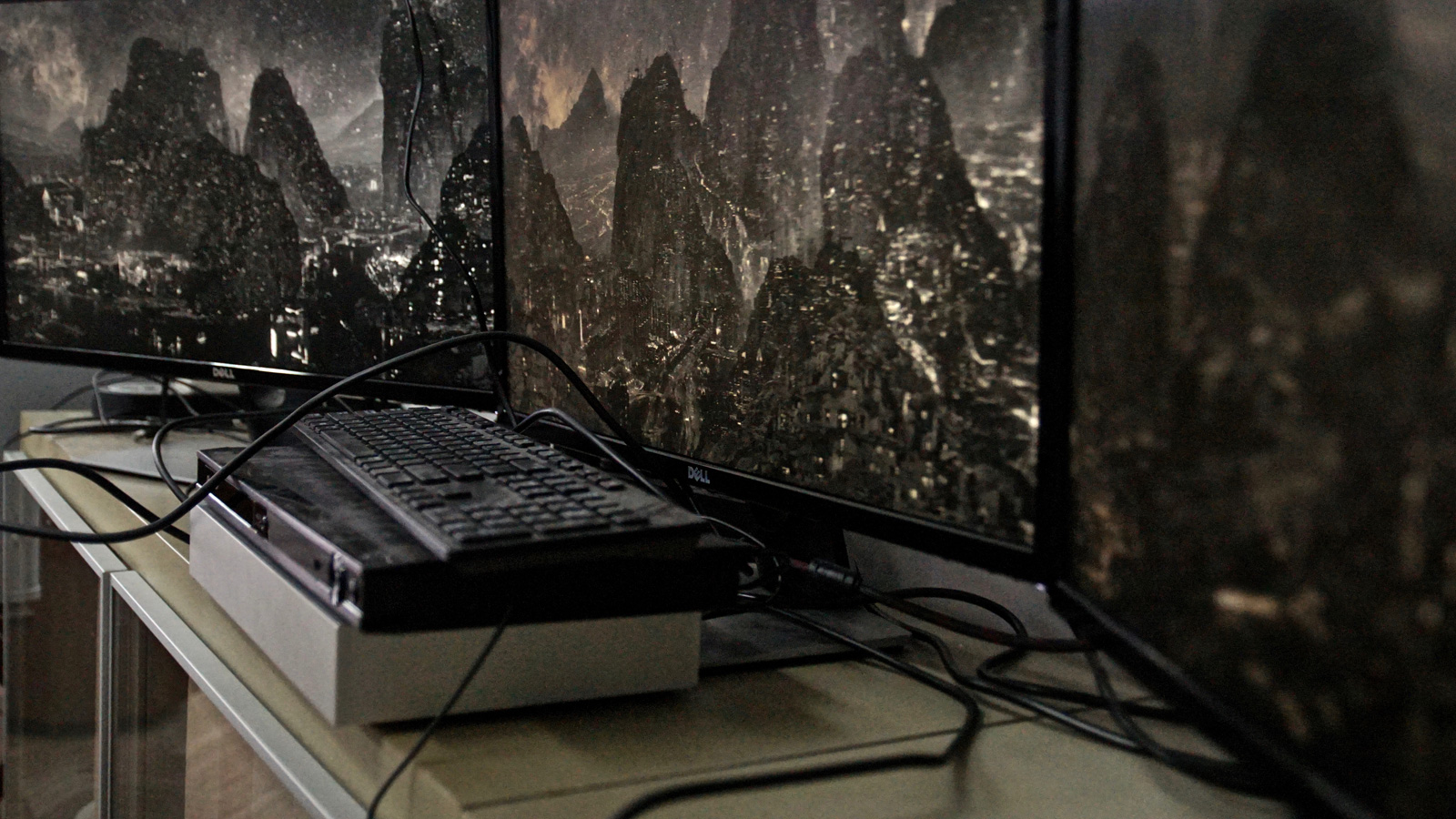Studio Visit: Digital Artist Yang Yongliang
In the crossroads between new visual languages and traditional Chinese art

by Alessandro De Toni
A few meters from the Bund—the iconic promenade in Shanghai that offers a picture postcard view of booming urban China—an Art Deco building raised in 1931 hosts a cluster of creative studios. Here, digital artist Yang Yongliang—an explorer of new Chinese aesthetics—conceives his pieces. At the age of 25, Yongliang decided that he wanted to be a full-time artist after receiving training in applied arts and graphic design, and working a brief stint in the advertising industry. This experience as a designer gave him a toolset to explore creativity by means of photography, video and new media, but Yongliang’s relationship with art dates back to childhood. As he recalls, “When I was a kid I studied traditional painting and calligraphy for many years. I was a very lively kid, and painting was the only thing that would keep me quiet.”

Today, painting still represents a sort of mindfulness practice to him, and a way to counterbalance the over-rationalization of digital media. However, Yongliang believes that doing shanshui (traditional Chinese ink painting) doesn’t make much sense as a working artist: life has changed and ink is no longer such a pervasive part of our lives as digital images are. This is reflected in his space which contains many screens.

As a professional artist, Yongliang’s work has been focused on reviving traditional aesthetics, bringing it back to life, but in new media. In turn, he developed his very own language by using images as brushstrokes and composing unique digital collages. From far away they resemble traditional landscapes but a closer look reveals a texture of buildings, cranes, traffic and urban wastelands. The harmonious sight of mountains and falls, which inspired the poets from the past, become a visual journey through the contradictions of development and mass-urbanization, a vivid experience for all the kids who have grown-up in Chinese megacities, who have seen their memories rapidly eroded by a constant race toward the future.

“Journey to the Dark,” an animated video released in 2017, has already been showcased worldwide. It is made of a digital juxtaposition of city shots Yongliang himself took around the city. In this long and meticulous process, he finds again a parallel with Chinese traditional painters. As he told CH, ‘Shanshui requires a lot of patience, a lot of repetition. Everyone who practices calligraphy knows that if you manually prepare the ink yourself, you need to spend half an hour before actually tracing a stroke on paper. It’s the same here, the mechanical side of taking thousands and thousands of pictures and post-processing them is like a meditation practice which is hard to endure for a lot of people. I guess my patience comes probably from the training I had as a kid.”

After experimenting with photo and video for more than ten years, Yongliang now uses his studio to venture into the world of virtual reality. “I had my first contact with VR several years ago in Los Angeles and I immediately thought it was meant to become an art medium,” Yongliang says. In fact, it reminded him of a philosophical idea: “In ancient times, in China, you had this concept of ‘woyou’ (laying down and wandering) as a form of art appreciation: you were lying in bed while looking at a painting and your mind was wandering inside it.” With this, he developed the “Eternal Landscape,” his first VR work—which showcased this year at Art Basel Hong Kong. It allows the viewer to explore a Song Dynasty landscape of mountains, cliffs, streams and more.
Yongliang’s restless search at crossroads between new languages and traditional imagery is pushing him to play with a Chinese time-honored icon in another different way. At his studio, we got a sneak peak of a new upcoming work: a dynamic VR twist on Chen Rong’s “Nine Dragons” hand-scroll painting, a famed late Song dynasty artwork. The overused portrait of the Chinese dragon as symbol of power, gold and strength—a widespread symbology which originally comes from the Qing dynasty—is set aside to show the mythical animal’s traditional features, the signs of time which bend its body like an old root, the marks of a long-lasting wisdom.

Yongliang’s artworks elegantly walk the line between these new and traditional practices, invoking suggestions of the past and reflections on the present. On the eve of his moving to New York, where he’ll set up a new studio in the next months, he says: “I realize that traditional Chinese art can often be uneasy to approach for a foreign audience—if you consider calligraphy for example, it’s a connoisseurs only domain—but I hope that by adopting a more global language, I can raise more interest toward the deeper roots of ancient and meaningful traditions.”
Studio images by Alessandro De Toni, artwork images courtesy of Yang Yongliang












